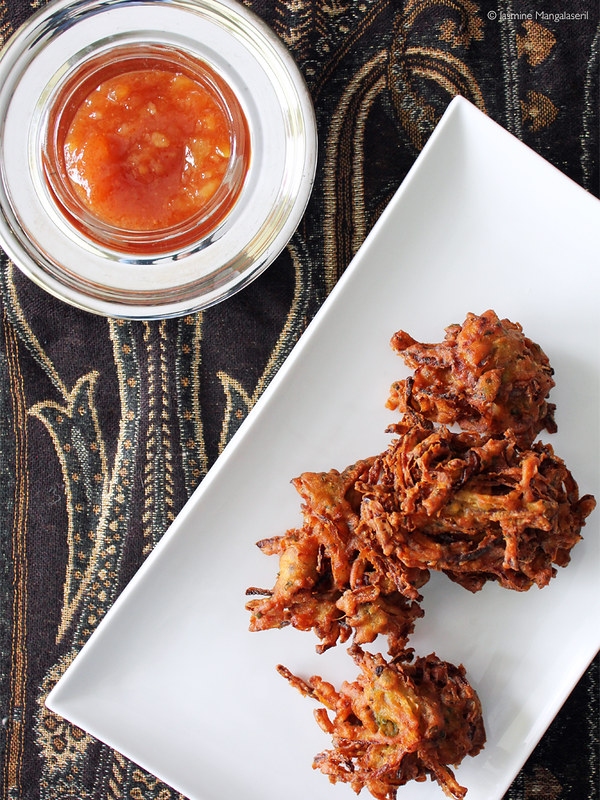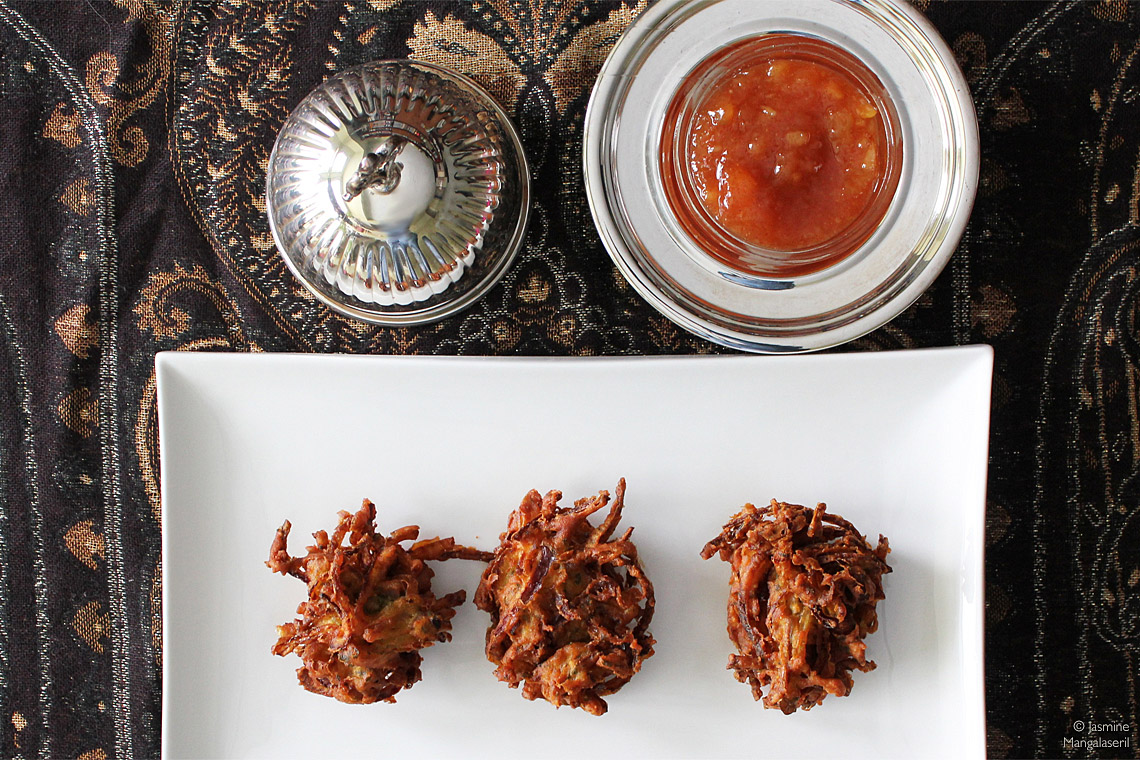 Edna Staebler and I met and bonded over Indian food.
Edna Staebler and I met and bonded over Indian food.
It was her request. She was 100 years old and living in a nursing home; the food—although probably good for her—was bland and boring. She wanted something tasty and flavourful, but not too spicy. It was a request I was happy to grant.
During that May evening in 2006, we (Edna, a mutual friend, and I) sat in her room and talked for hours about food and writing and life, surrounded by plates and bowls of onion bhajis, chicken kurma, rice, palak paneer, gobi Manchurian, pappads, parathas, and vermicelli pudding. She was a good eater—someone who happily tried new and different foods without fuss or reservation. She savoured the conversation as much as she did food.
Edna was cheerful, encouraging, and quick-witted—all the qualities one would expect from an award-winning journalist whose work illuminated the lives of ordinary, sometimes overlooked, Canadians. Whether they were sword fishermen in Neil’s Harbour, descendants of African American slaves in Nova Scotia’s New Road Settlement, Hutterites in Alberta or Italian immigrants in Toronto, through her articles, she opened many Canadians’ eyes to our multicultural mosaic.
Today, she’s most associated with Waterloo County Mennonites and their cookery. Her 1954 Maclean’s piece, “Those mouth-watering Mennonite meals,” was the precursor for Food That Really Schmecks, the best-selling 1968 cookbook that made her a household name.
Edna and I met up once more. This time, the Thai dinner we planned on became Swiss Chalet. She wasn’t disappointed, and neither were we. We made plans for a third supper, but she passed away before we could dive into that satay chicken and green curry.
At the community celebration of her life, I found out her friends knew about all about our dinners. One friend pulled me aside and said, “It was a short friendship, but to Edna, it was a deep friendship.”
A Day That Really Schmecks
Ten years ago, on what would have been Edna Staebler’s 101st birthday, I created and hosted “A Day That Really Schmecks,” an online event that celebrated her culinary life. Foodbloggers from around the world prepared and shared their versions of her recipes. Edna was happy to see my takes on her recipes on Cardamom Addict–I know she would have been tickled to see so many others do the same.
Since then, I’ve adopted 15 January as both a day to celebrate my friend Edna and to launch my culinary New Year.
A Region That Really Schmecks
Edna Staebler’s journalism career was marked by her willingness to explore what was different to her (and likely to many others), and help Canadians better understand one another. We shouldn’t lose sight of that.
In planning for this year’s Schmecks post, I thought back to our first dinner and the clues it provided about this ebullient and witty woman who eagerly tucked into new and different foods. And this sparked an idea.
This year’s Day That Really Schmecks tribute also begins A Region That Really Schmecks, a new Rye and Ginger series that celebrates the diverse cuisines, and the people who brought and keep them in Waterloo Region. Launching it in 2017 also helps celebrate Canada’s 150th birthday by celebrating our own multicultural culinary mosaic here in Waterloo Region.
To find out more about the A Region That Really Schmecks series–and how you can contribute to it—please click here.
To both celebrate Edna’s birthday and launch the series, I chose to share a dish from that first dinner: onion bhajis. Onion bhajis (or bhajia, pakoras or vadai) are deep-fat fried onion fritters. Eaten as a snack in India, they’re a popular starter in many Indian restaurants here in Canada.
Onion bhajis
At their best, onion bhajis (or pakoras or vadai) are crispy and light; at their worst, they are stodgy and greasy. The trick lies in the batter. Too thick, the globby mix makes fritters difficult to cook through without burning. Too thin, the batter runs off the onions, and they separate into strands in the cooking oil. Just right, the mixture is like heavy cream and clings to the onions to create a craggy, bronzed exterior with a centre that’s nutty, tender, and light.
Please scroll below the video for the written recipe:
Ingredients
Yield: 16 fritters
| 90g | ¾ Cup | Chickpea flour (Gram/Besan), plus more if needed |
| 40g | ¼ Cup | Rice flour |
| 3.75ml | ¾ Teaspoon | Kashmiri chilli powder (to taste) |
| 3.75ml | ¾ Teaspoon | Salt |
| 2.5ml | ½ Teaspoon | Turmeric |
| 1.25ml | ¼ Teaspoon | Fennel seed, roughly chopped |
| 0.62ml | 1/8 Teaspoon | Asafoetida (Hing) OR 5ml of fresh lemon juice |
| 60ml | ¼ Cup | Finely chopped coriander leaf |
| 10ml | 2 Teaspoons | Finely minced or grated garlic |
| 10ml | 2 Teaspoons | Grated ginger |
| 1-2 | 1-2 | Fresh green chillies, finely sliced (optional, to taste) |
| 2-3 | 2-3 | Fresh curry leaves, minced (optional | see notes) |
| 14g | 1 Tablespoon | Melted ghee or butter |
| Water, as needed | ||
| 400g | 4 Cups | Onions, thinly sliced (3-4 medium onions) (see notes) |
| Oil for frying |
Method
- Heat 3-4 cm oil in a fryer or a high-sided pot until it reaches 180C (375F). Take the usual safety precautions when deep-fat frying.
- Sift the flours with the dry spices. Mix together the coriander, garlic, ginger, chillies (if using), curry leaves (if using), ghee and lemon juice (if using) and add to the spiced flour. Stir in enough water to bring it to the consistency of heavy cream. Coat the onions in the batter. The batter shouldn’t be clumpy and it shouldn’t run off, but cling to the strands.
- Once the oil is up to temperature, scoop a tablespoon of the mixture and carefully drop it into the oil, being careful to not overcrowd the pan. Turn them a couple of times in the oil and cook until crisp and copper-coloured and bob to the surface—about 3-4 minutes.
- Remove from the oil, drain the onion bhajis on a paper towel-lined plate, then put on a cake cooling rack set over a cookie tray, and keep in the oven as you cook the rest of the batches.
- Serve warm, with tamarind chutney, coriander chutney, or even spiced ketchup or barbeque sauce
- Leftovers (if any) can be reheated in a warm oven for a few minutes to recover their crispness.
Notes
- The asafoetida’s garlicky-oniony tartness mellows when the batter hits the oil. It’s the sourish tang I’m after, which is why I suggest lemon juice as its substitute.
- Fresh curry leaves can be hard to find, so no worries if you leave them out. Don’t substitute with dry leaves, bay leaves or curry powder.
- Use the onions you have on hand. Personally, I like a mix of red (for sweetness) and yellow (for pungency).
- Be sure to let the oil climb back to temp before adding the next batch. If you don’t, the fritters can absorb oil and become heavy.
- If you want to turn this into the bhajis’ puffier cousin, the ulli vadai, add a good pinch of bicarb (baking soda) to the mix.


